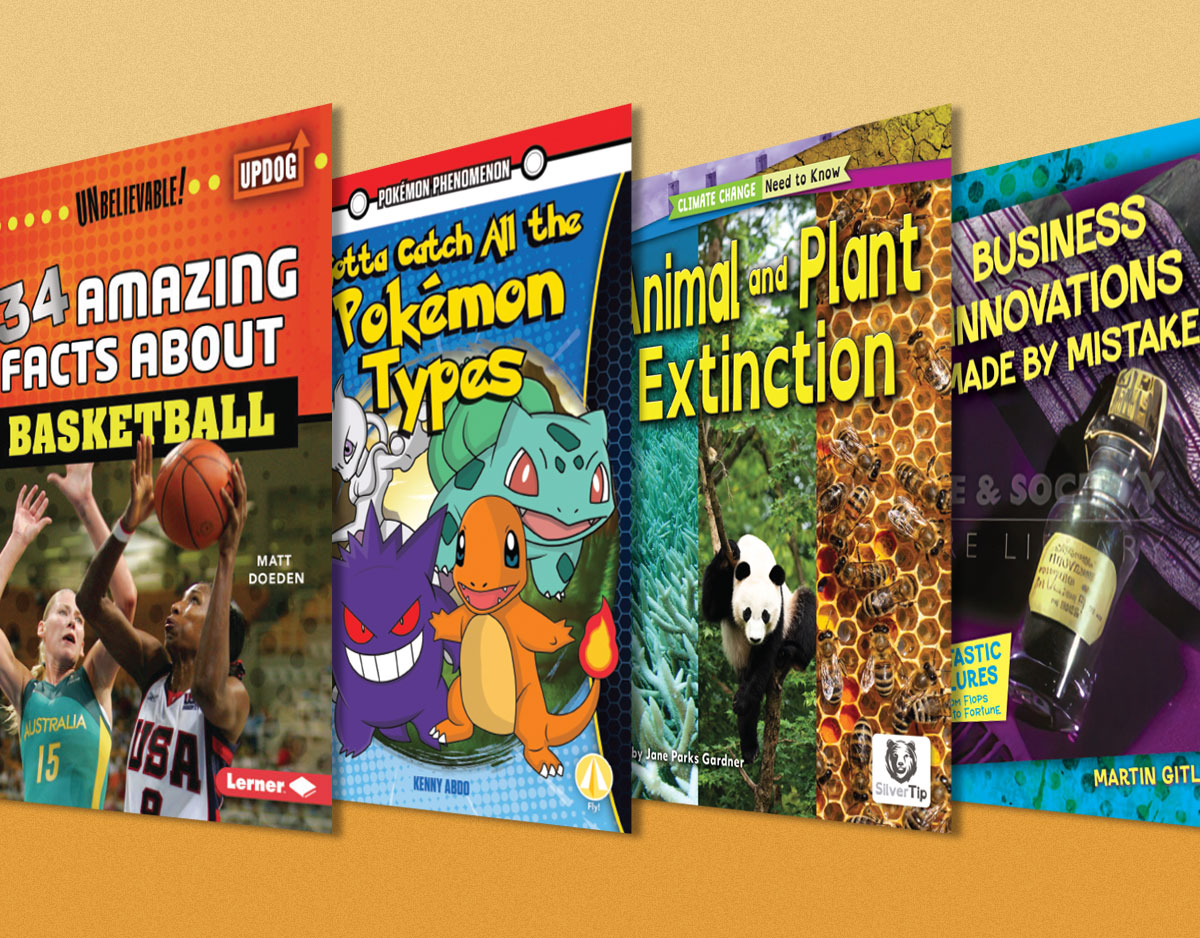Felix Yz
Felix Yz
Written by Lisa Bunker
Published by Viking Press, 2017
ISBN: 978-0-425-28850-4
Grades 5-8
Book Review
Being thirteen can be hard even on the good days. Protagonist Felix Yz faces bullies, strives to please his teachers, and tries to get to know his crush Hector a little better. But he has even bigger problems, like the alien Zyx who lives within him, and the fact that Felix and Zyx are running out of time. A decade earlier, when a scientific experiment went awry, Felix’s father was killed, and Zyx, from the fourth dimension, was fused inside of Felix. If doctors are unable to separate them soon, both will die. This science fiction novel unfolds in the month leading up to “the Procedure” to separate the two. In a secret blog, Felix muses on life in Maine, comics, Hector, and his family’s anticipation of and trepidation about the operation. Zyx’s perspective punctuates the narrative when he occasionally seizes control of Felix’s hands on the computer keyboard, his only capacity to communicate. Bunker’s debut novel will have readers laughing and crying as they follow Felix and Zyx through their final intertwined days, and witness the sweetness of family and first love, with all the tensions that such relationships bring. Felix’s family offers readers a window into a contemporary American family: his paralegal mother, his gender-fluid grandparent Grandy (sometimes presenting as Vern, sometimes presenting as Vera), and his piano-playing sister, Bea. Ideal for the exploration of character, identity, gender, and a consideration of the space-time continuum, Felix Yz can serve as a whole-class read aloud, a literature circle book, or independent reading.
Teaching Ideas and Invitations
Voice and Character: Robot vs. Alien. What is like for an author to write a non-human voice? How does the author infuse the character with enough personality and language to be believable to readers? How does the author build a connection between the non-human and the reader? In a Duet model, have some students in class read Felix and some students read Wild Robot by Peter Brown, or have students read each in succession. As students read, have students track their thinking about Zyx, Felix’s inner alien, and Roz, the protagonist of Wild Robot. What attributes would readers assign to each character? In what ways is each “human-like?” In what ways do the alien and the robot reveal their differences from humans? To what extent, if any, do those differences matter? How does each book leave the reader feeling about and towards the non-human character? As students ponder these questions, support students as they write the next chapter for Zyx and Roz, and compare and contrast their “missing” final chapters.
ADVERTISEMENT
ADVERTISEMENT
Countdowns. Felix writes his blog while counting down the days until his “Procedure.” This countdown provides an overall structure for the book. How have other children’s authors used the calendar structure within their novels? Have students in literature circles exploring Felix Yz and Countdown by Deborah Wiles. How does each novelist use time to structure the novel? As students are reading the novels, support them to compare and contrast the pacing of the story. How much time does the story cover? How does the author let you know that? In writer’s workshop, have students practice this literary technique but having them write stories that take place over twenty-four hours or within one week. How does the time structure support their writing and plotting? How does it restrict the process?
Representations of Aliens in Popular Culture. Before reading the novel, have students draw pictures of aliens. What do they look like? Where are they from? How do they have these images in their head. As they make their way through Felix, have them track their understanding of Zyx as the novel progresses. Because Zyx is inside of Felix, he has no separate shape or form until the very end. How is this different from the ways that aliens have been presented in pop culture over time? Felix tells us that amidst the swirls and spirals of “the Procedure” that “I felt that one part of the thread was twisted around in the shape of me, and that another part off in the dark somewhere, an infinity of nested spirals away, but still connected, was twisted around in the shape of Zyx” (p. 278). What is “the shape of Zyx?” Have students create a portrait of Yzx in the fourth dimension. Next, or while students are working on portraits of Zyx, have them read this Popular Mechanics story on the history of pop culture alien representation. Play excerpts from some of the movies mentioned. You might also want to share some of these Smithsonian Magazine-curated resources on the impact of the initial War of the Worlds broadcast. Finally, have students consider this NASA report from 2011 on the space-time continuum.
Traveling through Dimensions. Compare and contrast Felix’s experiences with the fourth dimension with two other middle grade literary characters: Meg Murray from A Wrinkle in Time and Miranda in When You Reach Me, a book written in homage to Wrinkle. Both Wrinkle and Felix are “up front” about the dimensions with which their characters interact, while the information unfolds only at the end of When You Reach Me. Use these books as a springboard for conversations about the fourth and fifth dimensions. Working with the science teacher on your team, have students grapple with these big concepts. How does each novel present an understanding of these dimensions to the readers? You might want to do a close reading of the night that Zyx gives Felix a “field trip to the fourth dimension” (pages 218-221) and the climatic moment during “the Procedure,” in which Zyx and Felix are “Halfway in between” the third and fourth dimensions (pages 276-279). How do Bunker’s words match scientific definitions and understandings of the fourth spatial dimension?
Playing Chess. Within the novel, Zyx emerges as a tremendous chess player. How familiar are your students with chess? If they play the game, do they play a physical or virtual version of the game? Who do they play it with? Bring in a local chess player/advocate from your school or local community, or students parents or grandparents who are familiar with the game, to teach it to your students. As students learn the game, and play it over time, how does their understanding of the strategy grow and change? Students might be interested in learning more about computers playing chess from this 2016 Popular Mechanics article. After they have considered the real world ways in which computers, not aliens, can play chess, have them consider the ways in which chess helps them. How are their chess strategies useful in other parts of their lives? Have students read this Parents magazine article on chess and children, and have them debate the merits of chess from a health and entertainment context.
Identity. Felix literally has an alien being inside of him. But what are some of the ways that Zyx could be read as a metaphor? Have students explore the different ways that Zyx can represent the multitude of identities that we all have inside of us. Towards the end of the novel, Zyx reveals some of the sacrifices he has made in order to keep Felix alive. In what ways do we sacrifice some parts of our identity for other aspects of our identity? Using Zyx as a metaphor, have students write about previous identities they have shed as they have gotten older.
Critical Literacy
Pronouns and Gender. In an attempt to create new gender-neutral pronouns, Bunker invented new words: vo (he/she), ven (him/her), veir (his/her), veirs (his/hers), veirself (himself/herself). Have students track their responses to these pronouns as they read. Do these new pronouns throw them off? How long does it take for each reader to comprehend the pronouns? How does this new language challenge their notions and understandings of pronouns? You might want to seize this opportunity to do a refresher lesson on pronouns using Ruth Hiller’s picture book on pronouns: Mine, All Mine. To what extent do your students think about pronoun usage? Your English Language Learners and Emerging Bilingual students might have interesting stories to share about navigating new pronouns. What was their transition like from their first or second language to English? You might also want to share this March 2017 Washington Post story about the Associated Press’s adoption of “they” as a general neutral pronoun. Finally, have your students consider other gender neutral pronouns that could work in English. Have them all agree to try an agreed-upon single gender neutral pronoun system, either Bunker’s or one of their own invention) for a five-day school week. At the end of the week, have students write or draw about what was comfortable, what was difficult, and the ways that they adjusted or struggled to adjust to the new language. Finally, have them discuss the ways in which the experiment has them thinking differently about language they may take for granted.
Further Explorations
Digital Resources
“The Brainy Benefits of Chess,” Parents, 2001
“Checkmate, Human: How Computers Got So Good at Chess,” Popular Mechanics, 2016
“A History of Aliens and UFOs in Pop Culture,” Popular Mechanics, 2009
“NASA Announces Results of Epic Space-Time Experiment,” NASA
Books
Brown, P. (2016). Wild robot. New York: Little, Brown.
Hiller, R. (1999). Mine, all mine: A book about pronouns. New York: Puffin.
L’Engle, M. (2012). A wrinkle in time. New York: Farrar Straus & Giroux.
Stead, R. (2009). When you reach me. New York: Wendy Lamb Books.
Wiles, D. (2010). Countdown. New York: Scholastic.
About Mary Ann Cappiello
Mary Ann is a professor of language and literacy at Lesley University. A former public school language arts and humanities teacher, she is a passionate advocate for and commentator on children’s books. Mary Ann is the co-author of Teaching with Text Sets (2013) and Teaching to Complexity (2015) and Text Sets in Action: Pathways Through Content Area Literacy (Stenhouse, 2021). She has been a guest on public radio and a consultant to public television. From 2015-2018, Mary Ann was a member of the National Council of Teachers of English's Orbis Pictus Award for Outstanding Nonfiction (K-8) Committee, serving two years as chair.
ADVERTISEMENT
ADVERTISEMENT
SLJ Blog Network
Newbery/Caldecott 2025: Spring Check-In
Ellen Myrick Publisher Preview: Spring 2024 – Cicada, Creston, Diamond, and Eye of Newt
Number Call | Review
It’s Time for More Mock Newbery Suggestions
Navigating the High School and Academic Library Policy Landscape Around Dual Enrollment Students
This Feels Like My First Book, a guest post by Jeffrey Ebbeler
ADVERTISEMENT








